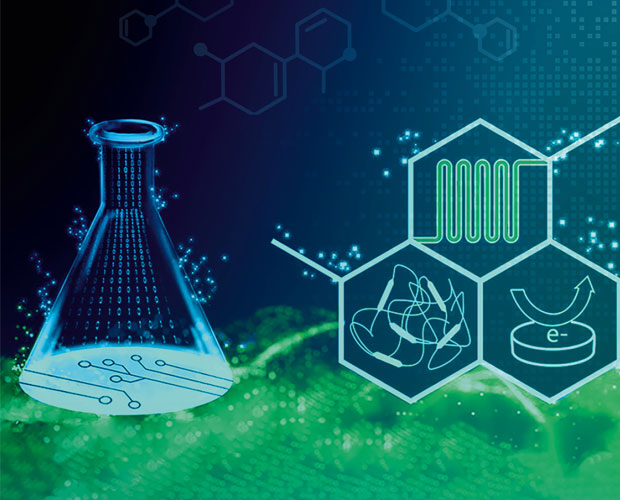Fraunhofer at ACHEMA 2024
Green chemistry can make a crucial contribution to the process of transforming our economy and society toward greater sustainability and climate neutrality. Fraunhofer scientists are instrumental in supporting industry with practical solutions. They will be presenting a selection of their current projects and research findings at the Fraunhofer booth, D49 in Hall 6.0, at ACHEMA, the world’s leading trade fair for the international process industry, from June 10 to 14.
From new materials to greater efficiency in using energy, chemicals are an integral element of shaping a sustainable future. As a major driving force, the chemical industry plays a key role in this development — and it has embraced ambitious goals for climate action and resource efficiency. The industry plans to not only defossilize its production processes, but also establish a circular and greenhouse gas-neutral conversion of materials and energy.
This transformation requires great efforts toward research and development. The industry is being supported in this by the Fraunhofer Chemistry Alliance. The 15 member institutes will be presenting their process and product developments in this regard at ACHEMA 2024 in Frankfurt. The scientists will be showing ways to digitalize chemical processes while promoting a circular economy and enhancing safety at the same time. The experts are also focusing on making it easier for companies to scale up their production methods and on generally enhancing process efficiency.
ShaPID — Shaping the future of green chemistry
Nine Fraunhofer institutes launched an interdisciplinary flagship project titled Shaping the Future of Green Chemistry by Process Intensification and Digitalization (ShaPID). They are now scheduled to appear at the joint booth to present their findings from more than three years of applied pre-competitive research.
Sample processes span a huge range. How do we get from CO2 and biogenic sources of raw materials to new polymers? How can energy-efficient synthesis of key monomer building blocks from non-fossil raw materials be made a reality? And how can highly reactive species be harnessed for atom-efficient production of key precursors? Within the flagship project, the specialists combine complementary technologies from many different areas of synthesis, reaction, and catalysis technology, electrochemistry, continuous process engineering, modeling, simulation, process optimization, digitalization, and automation into viable solutions and develop tools for objective assessment of how green and sustainable chemical processes and process steps actually are.
Dr. Stefan Löbbecke, spokesperson and head of the central office of the Fraunhofer Chemistry Alliance, comments: “This interdisciplinary approach is the key to achieving the necessary technological maturity for new and green processes. In this way, we succeed in providing targeted support to both the companies in the chemical industry and its cooperating sectors in realizing these aims.”
Special hydrogen showcase
The joint Fraunhofer booth will also offer a special hydrogen showcase. It is being organized by the Fraunhofer Hydrogen Network, which pools expertise from across 38 Fraunhofer institutes. One member is the Fraunhofer Institute for Ceramic Technologies and Systems IKTS, which will be presenting the Neo-PEC joint research project at the fair. The specialists will be demonstrating a tandem module that will be able to produce green hydrogen cleanly and cost-efficiently in the future, enabling a decentralized hydrogen supply. The reactor operates self-sufficiently, generating hydrogen from sunlight and water. The technology needs no expensive electrolyzers and can be scaled to any size. Its core features a modular design, which allows units to be linked together into larger areas.
These and many other solutions, projects, and research findings will be presented by the Fraunhofer experts at the joint Fraunhofer booth, D49, in Hall 6.0 from June 10 to 14.
Your contact:
Dr. Stefan Löbbecke
Managing Director
